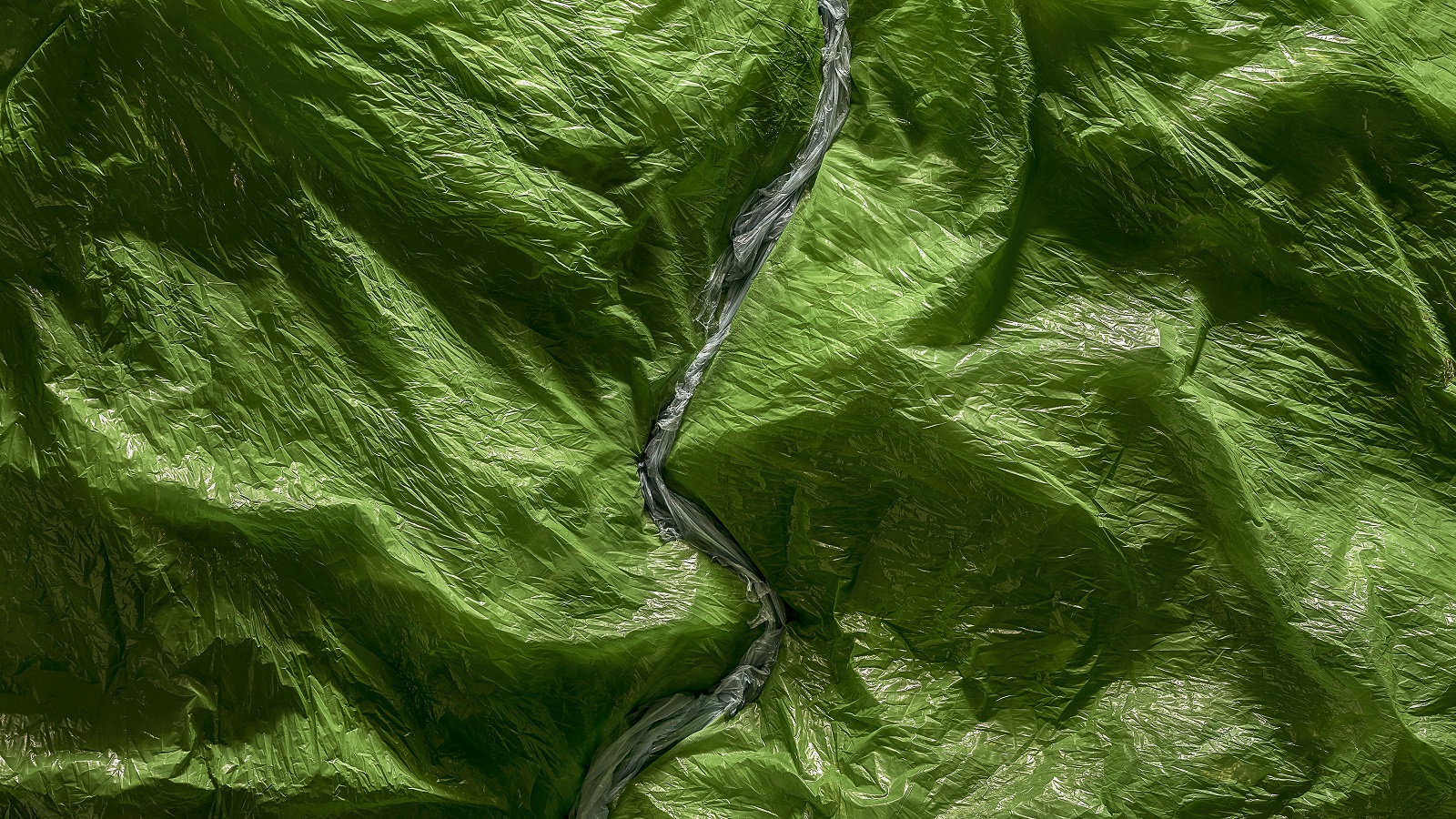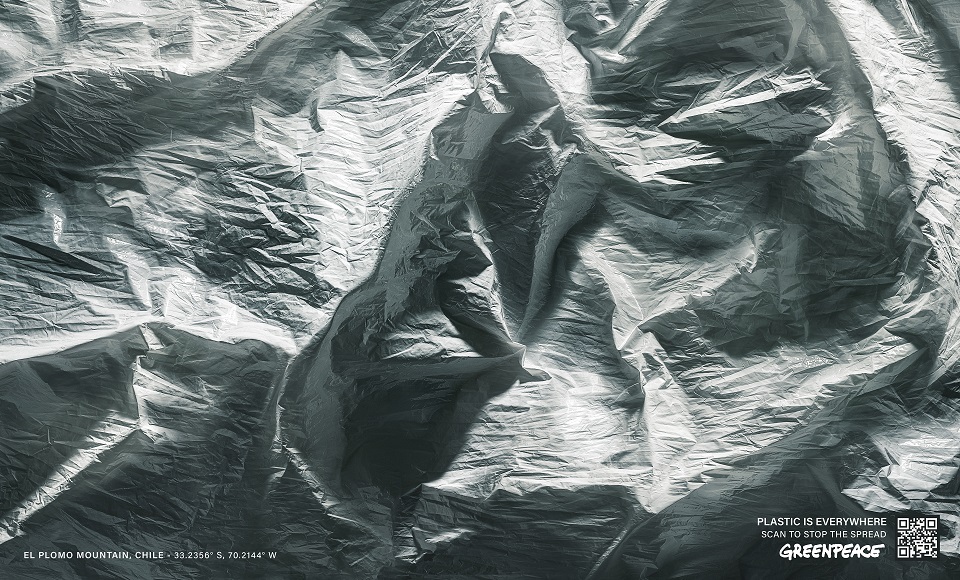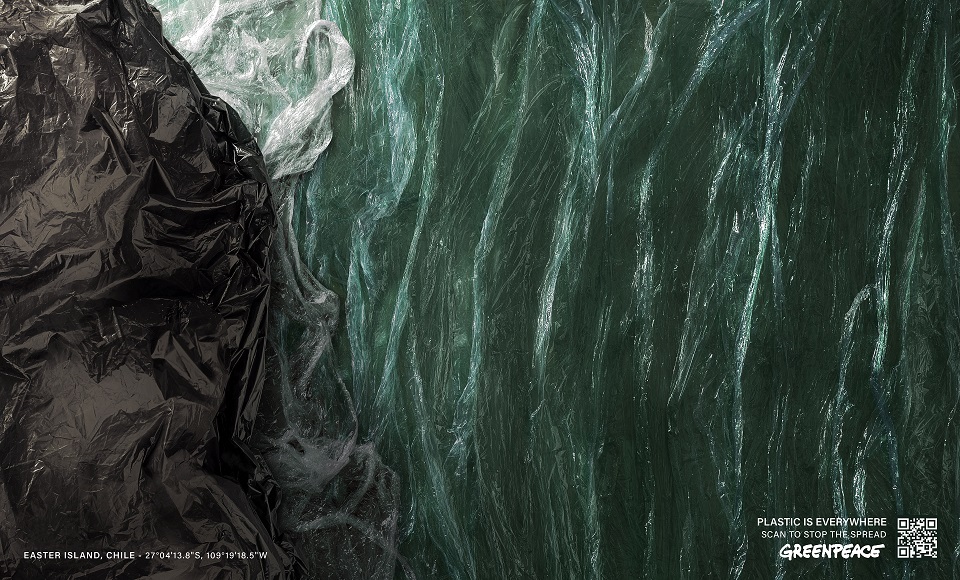The nature, covered in plastic. Can you imagine it? Instead of snow, for example, mountains have plastic on their slopes. Sand does no longer shape the dunes of the desserts. Rivers’ sound waves complement those made by the trees’ leaves to form a “Plastic Rustling” symphonia. Can you imagine building Earth’s iconic landmarks just from memory? There is a need for behavioral change and Cheil Central America helps Greenpeace Chile express this and the impact pollution has on nature, even on protected environments.
Chile has become the largest Latin American country in producing plastic waste. With more than 990.000 tons of plastic produced annually, only 8% is recycled. To underline the extent of the problem and empower people to adopt an eco-friendly behavior and reconsider their consumption habits so that plastic waste can be reduced drastically, the agency “invited” plastic to perform in “The Nature of Plastic” play. The campaign has five scenes featuring some of Chile’s iconic landmarks recreated using plastic.
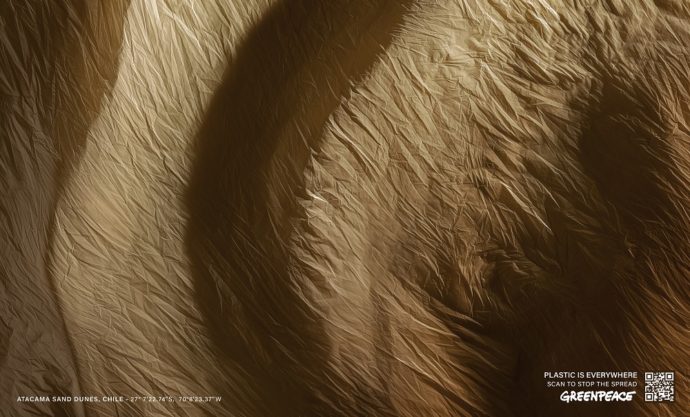
The Easter Island, the Atacama Desert, El Plomo Mountain, the El Morado Glacier, and the Araucania forest were chosen to show that even such places are threatened by plastic. Reinterpreted using this material, the ads that portray nature in an unnatural way can be seen across print, outdoor, and social.
Soledad Acuña, Project Leader at Greenpeace, said: “Plastic, in its different forms — microplastics — is covering the Earth completely. We developed this campaign to raise awareness of how plastic is modifying all our landscapes irreversibly, even in protected environments. If we act now, we can stop the spread of plastic.”
In a bid to address the seriousness of the problem, the agency explored the locations’ textures, colors, lights, and shadows, trying to capture recognizable elements of these places to design satellite photograph-style images. The illustrations are created using everyday plastic bags delivering an effect that tricks the eye of the viewers, reflecting the fact that we may not even be able to see the damage we do through our plastic use habit.
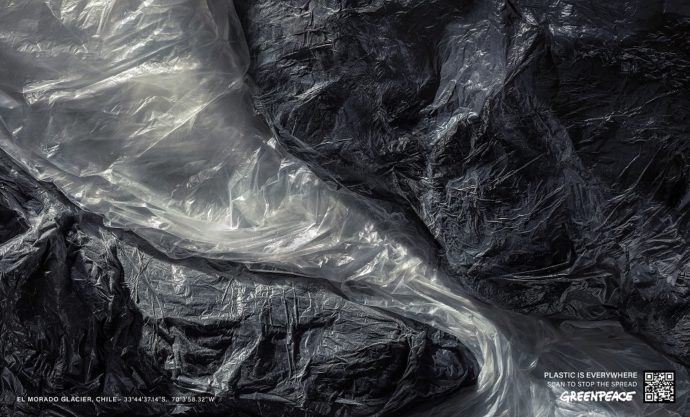
Mariana Peluffo, Regional Creative Director at Cheil Central America, said: “Greenpeace has a powerful voice that has set the tone for this campaign. From the beginning, we knew we wanted to create a stunning visual campaign that could effectively reflect what plastic pollution is doing to nature. From a different perspective, ‘The Nature of Plastic’ campaign exposes a clear message: Plastic is everywhere.”
Each ad features the message “Plastic is Everywhere” and comes with a call-to-action to “Scan to Stop the Spread,” which can be triggered via a QR code. “The most important thing is that every print has a QR code to take action immediately,” continues Peluffo. Once scanned, the code directs users to an online petition.
The choice was implemented given the accelerated usage of the QR codes in the western world during the pandemic. The focus is on mobile interaction to help people make better choices and — in this case — take real action by petitioning leaders to change their policies around plastics. The ads will run on billboards, in magazines, and on digital platforms across March and April 2021.
Credits:
Client: Greenpeace Chile
Agency: Cheil Central America
President: Kyung Keun Choi
Creative Director: Mariana Peluffo
Copywriter: Mariana Peluffo
Graphic Production: Antonio Valdés
Account Director: Erika Campos
Account Manager: Rosana Pérez
Account Media Executive: Martín Romero
Director of Photography / Production / Art: Diego Salas
Photography: Segundo Luchia Puig / Santiago Mendez Isla
Prop Master: Ángel Ramirez
Digital Retouching: Diego Salas
Production House: CYLNDR Chile
Post Production House: RATIO
Video Digital Retouching: Ilusión Art Agency
